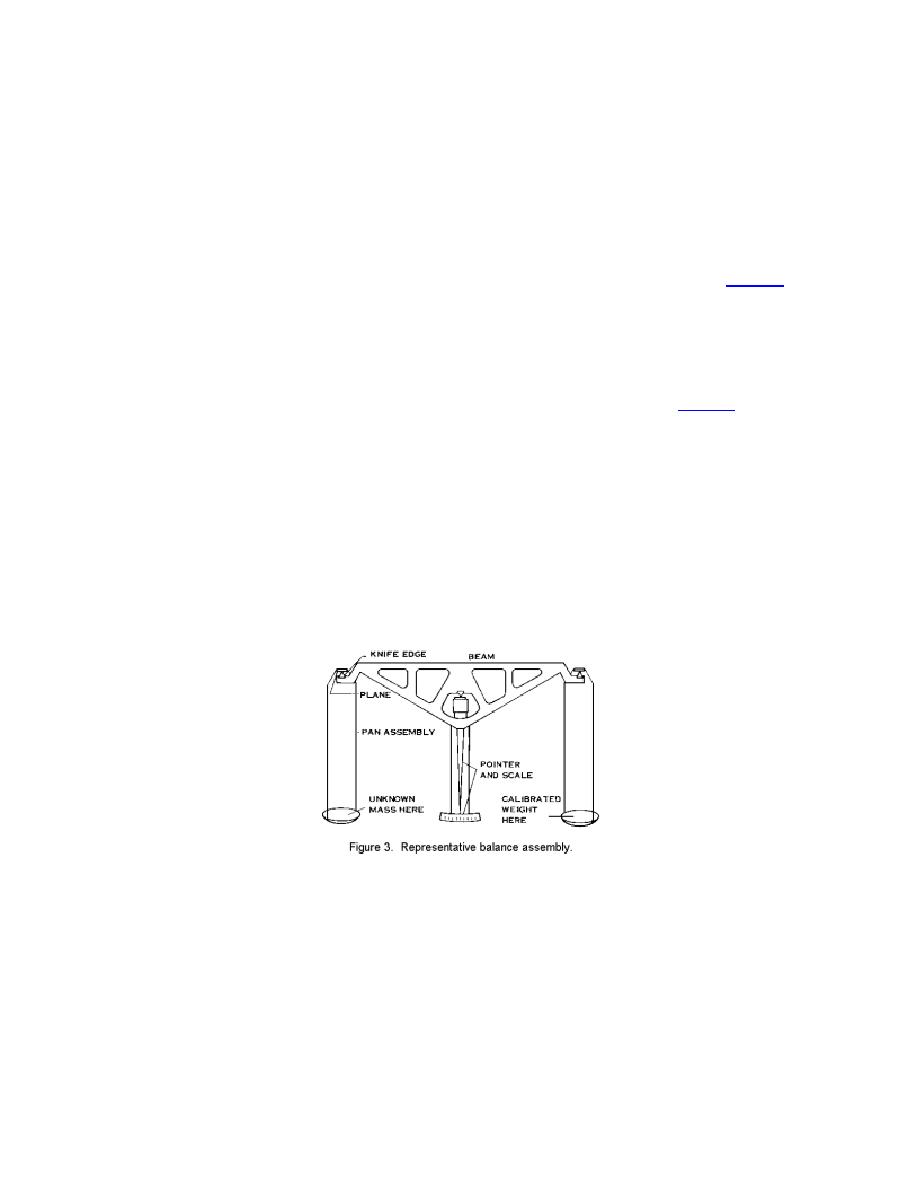
by the addition of weights to the left-hand pan and second by the movement of the left-
hand rider (metal accessory placed on the beam) while the right-hand rider remains at
zero. Replace the unknown in the right pan with standard weights and move the right
rider to the same equilibrium point as before. The weight of the unknown is the sum of
the substituted weights and the reading of the rider.
d. Let us examine each of the measurement methods listed to be sure that you understand
the principle used. In the statement which described the direct weight measurement
method, we are referring to the use of a balance such as the one represented in figure 3.
When the calibrated weights on the right pan counterbalance the unknown mass on the
left pan, the weights of the known and unknown masses should be within 3 to 5 grams of
each other. The condition whereby the two weights are nearly equal is evidenced by the
fact that the instrument pointer no longer moves. When the nearly balanced condition is
reached, the pan arrests (devices designed to restrict the movement of pans) are released.
The pans are released so that the right-hand rider on the beam shown in figure 4 can be
manipulated until the pointer in figure 3 remains between the extreme graduation marks
on the scale. After you bring the balance into approximate equilibrium, the total weight
on the left hanger (unknown mass) is the sum of:
(1) The weights on the right side.
(2) The effective weight of the rider or beam weight determined by its position.
(3) Plus or minus the swing of the pointer interpreted in milligrams.


 Previous Page
Previous Page
